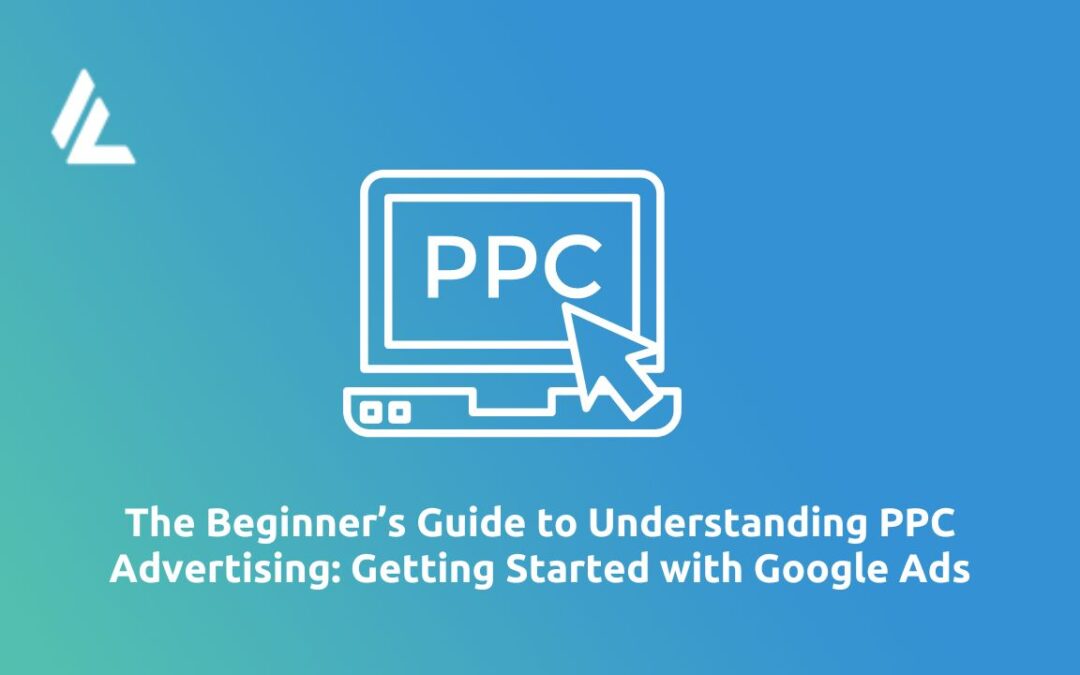Table of Contents
In today’s fast-changing digital world, Pay-Per-Click (PPC) advertising is a powerful way to drive targeted traffic to your website and achieve your business goals quickly. Among the many platforms for PPC, Google Ads is a strong option, offering a flexible and dynamic platform for advertisers of all sizes. For beginners entering the world of PPC advertising and looking to take advantage of its benefits, this beginner’s guide provides a thorough overview of starting campaigns with Google Ads, covering the essential basics for effectively using this powerful tool.
Understanding Pay Per Click Advertising
Before delving into Google Ads, it’s crucial to understand the basics of Pay Per Click Advertising. Essentially, PPC is a model where advertisers pay a fee every time their ad is clicked. It’s a way of purchasing visits to your site instead of trying to earn them organically. Pay Per Click Advertising, the foundation of platforms like Google Ads, operates on a simple premise: advertisers pay for each click on their ads, bypassing the organic traffic acquisition process. Unlike traditional advertising, PPC provides immediate visibility on search engine results pages. By “purchasing” visits to their sites, businesses can target specific audiences, measure performance in real-time, and optimize campaigns for maximum ROI. Understanding these fundamentals is crucial for effectively utilizing PPC to drive targeted traffic and achieve marketing goals.
Why Google Ads?
Google Ads, previously known as Google AdWords, is the most widely used Pay Per Click Advertising system globally. It enables advertisers to bid on keywords relevant to their business, ensuring that their clickable ads appear in Google’s search results. With billions of searches on Google every day, it presents a massive opportunity to connect with potential customers actively searching for products or services like yours.
In essence, Google Ads represents more than just a platform for PPC advertising—it serves as a gateway to a vast and engaged audience actively seeking solutions, products, and services. By leveraging this powerful platform, businesses can enhance their online visibility, drive relevant traffic to their websites, and ultimately, build meaningful connections with potential customers poised to convert.
Getting Started with Google Ads
1. Setting Up Your Account
The first thing you need to do to start using Google Ads is to set up an account. This means going to the Google Ads website and following the setup process.
During this process, you will be asked to give important information about your business, like its name, website URL, and the specific location you want to target with your ads.
You will also have to enter your billing details, which could be your credit card information or other payment methods, to finance your advertising efforts.
Once you’ve completed these steps, your Google Ads account will be ready for you to begin creating and handling your ad campaigns.
2. Understanding Campaign Types
Google Ads offers a variety of campaign types designed to meet different advertising objectives. These encompass Search Network, Display Network, Shopping, Video, and App campaigns. If you’re new to Google Ads, it’s advisable to begin with a Search Network campaign. With this type of campaign, your ads appear in Google’s search results when users look for keywords related to your business. This strategy guarantees that your ads reach users who are actively searching for products or services similar to yours, thereby increasing the likelihood of driving relevant traffic to your website.

3. Keyword Research
Keyword research is crucial for successful PPC campaigns. It is recommended to use Google’s Keyword Planner tool to identify relevant keywords with sufficient search volume and alignment with your business offerings. It’s important to concentrate on keywords with commercial intent, showing that users are likely interested in making a purchase or engaging with your services. By targeting these keywords, you can optimize your PPC campaigns to attract high-quality traffic that is more likely to convert into customers or leads.
4. Creating Compelling Ads
When creating ad copy for your PPC campaigns, it’s essential to ensure relevance, compelling messaging, and alignment with your target audience. Emphasize your unique selling propositions (USPs) that differentiate your business from competitors. Also, include a clear call-to-action (CTA) that encourages users to take the desired action, whether it’s making a purchase, signing up for a newsletter, or contacting your business. Utilizing ad extensions can further improve your ads by providing extra information or links, such as location extensions, call extensions, or sitelink extensions. These components work together to develop impactful ad copy that connects with your audience and boosts engagement and conversions.
5. Setting Your Budget and Bids
When establishing PPC campaigns, it is essential to define your daily budget and maximum cost-per-click (CPC) bids. These settings should be in line with your advertising objectives and financial limitations. Google Ads offers tools and suggestions to enhance your bids efficiently. By strategically managing your budget and CPC bids, you can attract relevant traffic to your website and maintain cost-effectiveness in your advertising efforts.
You can also read our blog related to blog: 7 Effective Tips for Maximizing ROI with (Pay-Per-Click) PPC Advertising
6. Monitoring and Optimization
Regularly monitoring your PPC campaigns is crucial for optimizing performance and reaching your advertising goals. It’s important to track key metrics such as click-through rate (CTR), conversion rate, and return on ad spend (ROAS). Analyzing these metrics helps you pinpoint areas for improvement and make necessary adjustments to enhance results.
Experimenting with various elements like ad copy, targeting options, and bidding strategies is essential for discovering what works best for your business. Testing different approaches enables you to refine your campaigns and maximize their effectiveness over time. By staying proactive and responsive to campaign performance, you can continuously optimize your PPC efforts to drive better results and achieve your desired outcomes.
Conclusion
Embarking on your Pay Per Click Advertising journey with Google Ads can truly transform your business, driving targeted traffic, leads, and sales. By grasping the basics outlined in this beginner’s guide and continually honing your strategy through experimentation and optimization, you can unleash the full potential of Pay Per Click advertising to meet your business goals.
Remember, succeeding in Pay Per Click advertising demands ongoing commitment and learning. Stay updated on industry trends, best practices, and Google Ads updates to stay ahead and maintain a competitive edge in the digital landscape.
So, if you’re ready to elevate your online advertising, delve into Google Ads and witness the impact of pay-per-click advertising firsthand.
Pay Per Click advertising is not just about driving traffic; it’s about driving the right traffic to your website. With Google Ads, you have the tools and resources to effectively reach your target audience and achieve your business objectives. Start your journey today and witness your business soar to new heights.

